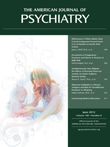Does the Neurotoxicity of Haloperidol Explain the Higher Mortality in Dementia Patients Compared With the Second Generation Agents?
To the Editor: The study by Kales et al. (1) in the January 2012 issue of the Journal provides yet another set of data confirming the relatively higher risk of mortality with the first-generation antipsychotic haloperidol compared with the second-generation antipsychotics olanzapine, quetiapine, and risperidone in elderly persons with dementia.
We have also reported a significantly higher mortality risk with haloperidol compared with risperidone and olanzapine in a veteran population over age 65 (2). Our sample was assessed in 1998 and 1999, which partially overlaps with the sample dates in the Kales et al. study (1998–2008), with very similar findings.
Kales et al. do not address the possible reasons for the higher mortality risk with haloperidol; however, published studies show that haloperidol induces apoptosis and is neurotoxic (3, 4).
In contrast, studies over the past decade indicate that atypical antipsychotics are neuroprotective (4), inducing neurogenesis and increasing levels of neurotropins such as nerve growth factor and brain-derived neurotrophic factor. Haloperidol's neurotoxicity may be particularly lethal for the degenerating brains of dementia patients. For several years, I have urged our trainees not to use haloperidol to treat psychosis in any patient, young or old. Other conventional antipsychotics, such as perphenazine, have also been reported to be neurotoxic (5), suggesting that serious consideration should be given to avoiding the first-generation antipsychotics for patients at any age, although their efficacy on psychotic symptoms is well established.
1. : Risk of mortality among individual antipsychotics in patients with dementia. Am J Psychiatry 2012; 169:71–79Link, Google Scholar
2. : Lower mortality in geriatric patients receiving risperidone and olanzapine versus halo-peridol: a preliminary analysis of retrospective data. Am J Geriatr Psychiatry 2004; 12:437–439Crossref, Medline, Google Scholar
3. : Neurotoxic/neuroprotective activity of haloperidol, risperidone, and paliperidone in neuroblastoma cells. Prog Neuropsychopharmacol Biol Psychiatry 2012; 36:71–77Crossref, Medline, Google Scholar
4. : Neurogenic actions of atypical antipsychotic drugs and therapeutic implications. CNS Drugs 2007; 21:715–725Crossref, Medline, Google Scholar
5. : Evolution of the neurotoxic activity of typical and atypical neuroleptics: relevance to iatrogenic extra pyramidal symptoms. Cell Mol Neurobiol 2001; 21:705–715Crossref, Medline, Google Scholar



